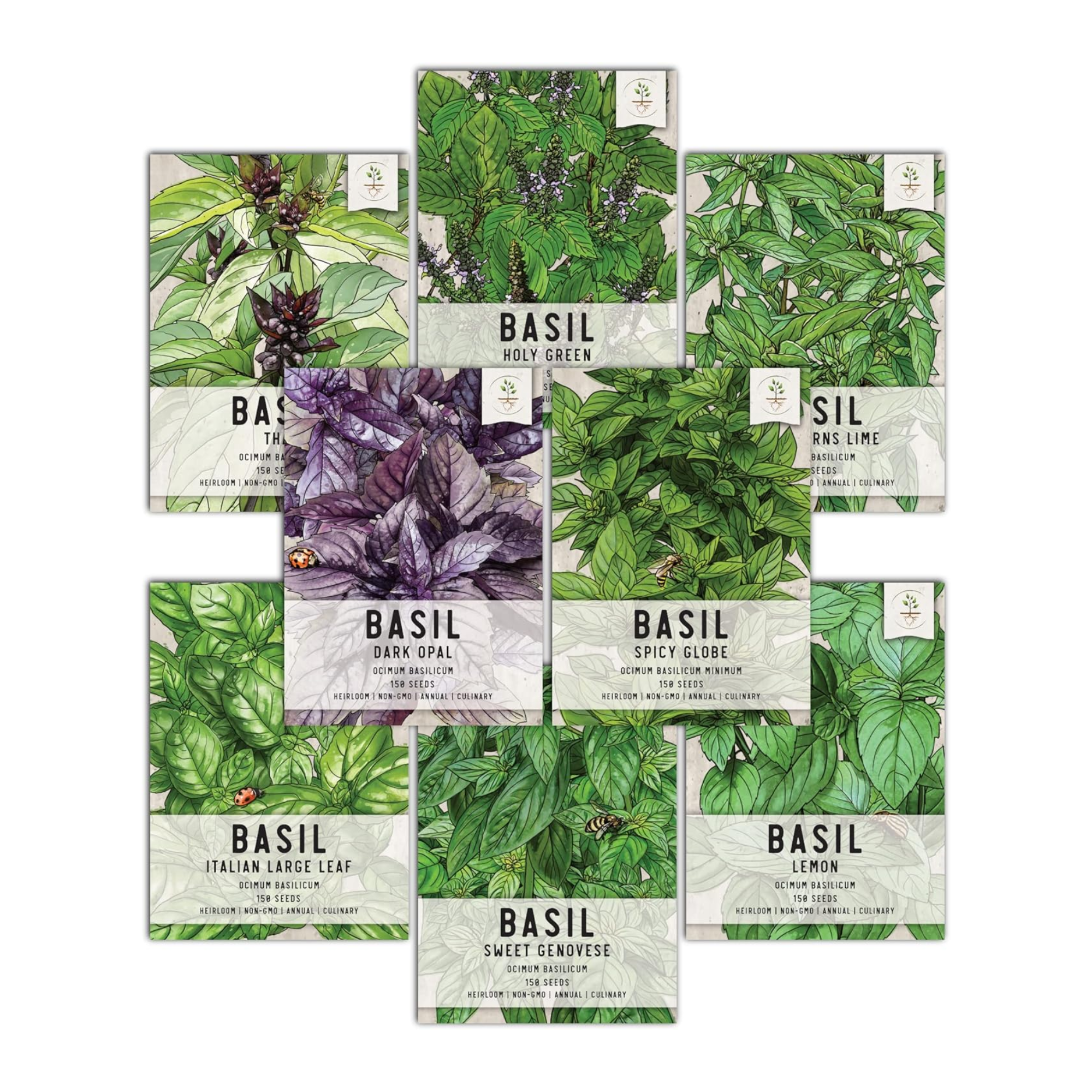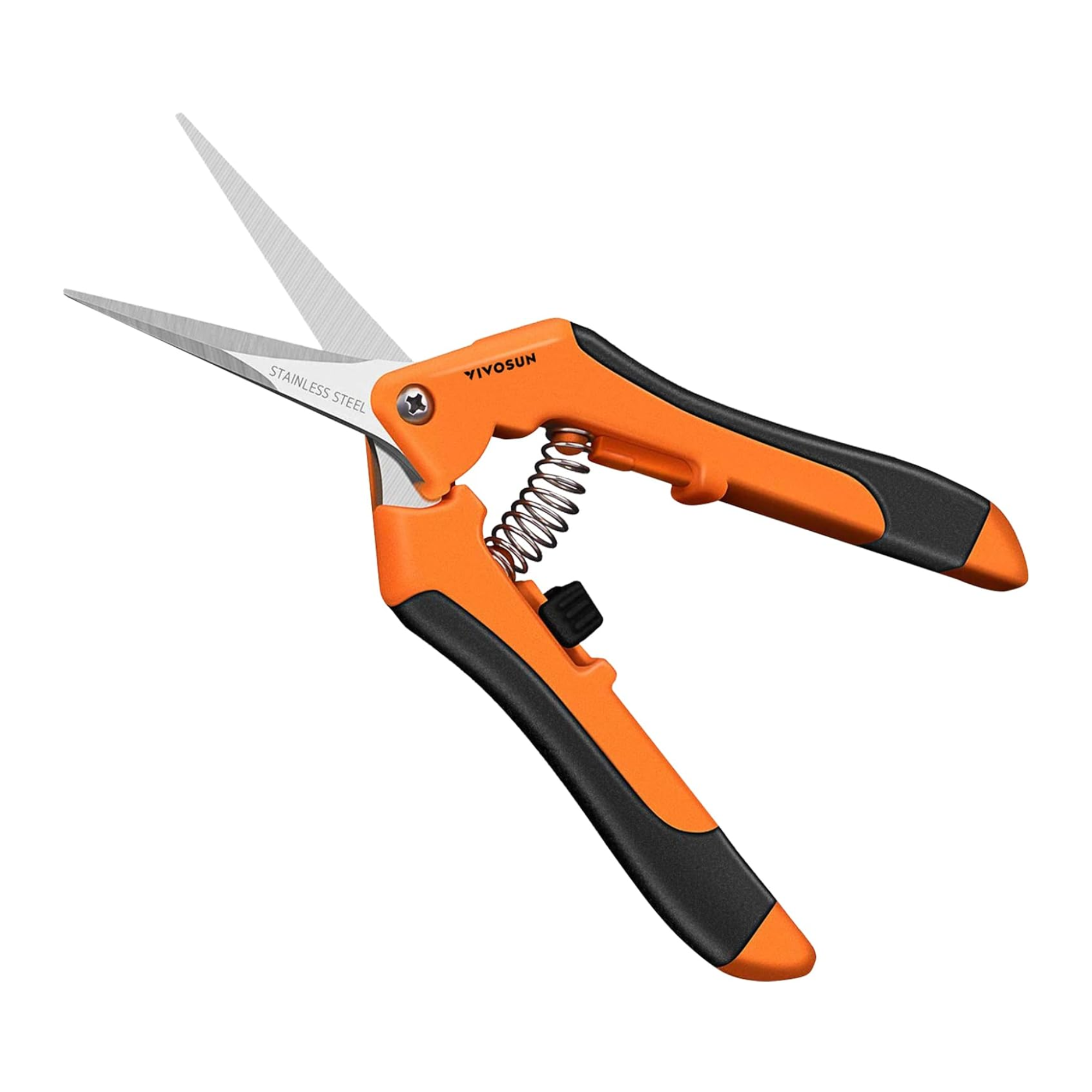How to Cut Basil From a Plant — This Gardening Technique Guarantees an Abundant Harvest All Year Round
Here's how to properly prune your basil plant for an aromatic herb that flourishes all season


As a culinary staple, basil deserves a place in every herb garden. From Caprese salads and garnish to pesto and other pasta sauces, fresh basil can zhuzh up any meal (there's a reason you'll find it in almost all Italian cuisine).
Generally, growing this aromatic herb is really simple, but there's a trick you ought to know if you want an everlasting crop that will serve your family meals for years to come. 'To keep your basil plants producing lush leaves all season long, it's important to harvest them correctly,' says Lina Cowley, professional gardener at Trimmed Roots.
Whether you have a bed of basil in your backyard or a small potted plant on your kitchen window sill, simply plucking individual leaves from your plant just won't do. Instead, there's a clever technique that offers a great way to make your indoor herb garden produce more. Here, we asked some experts how to properly cut basil from a plant for an abundant harvest of fresh herbs all year round.
@mindandsoil ♬ original sound - Mind & Soil
How do you harvest basil so it keeps growing?

There's a lot of talk in the gardening community about how to properly harvest your herbs. Now, I know what you're thinking - gathering a sprig of herbs is as simple as plucking your leaves from the stem, right? Wrong - particularly in the case of basil.
As with the other plants in your carefully selected herb garden idea, regular harvesting of basil stimulates growth, but there's also a proper way to do it if you want to encourage your plant to produce plenty of leaves. 'Start by identifying the main central stalk of your basil plant. This is the primary stem from which all other branches and leaves sprout,' says Lina Cowley of Trimmed Roots. 'Look closely at the stem and find a node – the point where two leaves or stems branch out from the central stalk. This node is crucial for proper pruning.'
When you're ready to harvest some fresh basil for your next meal, aim to cut about a quarter inch above the leaf node you've identified. 'This method isn't just about taking leaves; it's about encouraging the plant to grow more,' Lina notes. 'By cutting above the nodes, you're prompting the plant to produce two new stems at each cut point, leading to a fuller, bushier plant.'
According to Carrie Spoonemore, co-creator of Park Seed’s 'From Seed to Spoon' app, balancing your harvest will also encourage a flourishing basil plant. 'Harvest evenly from the top and the sides to maintain a balanced plant shape and prevent it from becoming leggy,' she instructs. 'Even if you don’t need the herbs, regular trimming helps the plant remain bushy and full.'
You might not be overly concerned about following this technique if you're not bothered about improving your basil production. Perhaps you simply have enough basil in your indoor garden already. The thing is, failure to prune your basil correctly will eventually lead to flowering which will stop your plant from producing its fragrant leaves altogether. And, while the flowers are certainly edible, their flavor is far milder than the leaves. 'Once basil flowers, it also tends to focus energy on seed production rather than leaf growth,' adds Carrie.
What is the best way to harvest basil leaves?

Harvesting is more than just knowing where to trim your basil plant - you also need to know the best method for pruning. While a pair of shape scissors or pruners might mean a cleaner cut, Carrie recommends pinching.
'When you pinch instead of cutting, it encourages the plant to grow bushier and produce more leaves,' she says. 'Use your thumb and forefinger to gently pinch off leaves above a set of two smaller leaves or where two leaves branch off. This stimulates the plant to grow more side shoots, making it fuller and more productive.'
For larger harvests (such as if you want to dry your basil), Lina recommends pruners to prevent damage to the plant and help it heal quickly. We like these precise and well-priced pruning scissors, available from Amazon. 'After harvesting, always give your basil a good drink of water to help it recover and bounce back stronger,' she adds. 'A balanced liquid fertilizer can also give it a nutrient boost.'
How to care for basil
Basil is one of the best herbs to grow in a kitchen, but it will be equally happy outdoors as long as the weather permits. 'Basil needs plenty of sunlight, ideally six to eight hours of direct sunlight each day,' notes Carrie. 'If growing indoors, place it on a sunny windowsill or under grow lights.' We like this compact grow light option from Amazon that's integrated into a pot as it's great at helping your plant produce plenty of leaves through the winter months.
Basil also thrives in warmer temperatures, generally between 70-85°F. 'It's sensitive to frost, so ensure it is kept in a warm environment,' notes Carrie. 'You should also use well-draining soil rich in organic matter and water basil plants lightly and consistently at the base of the plant, avoiding the leaves to prevent fungal diseases.'
Lina confirms that consistent moisture is key, and recommends feeding your basil with a balanced liquid fertilizer every two to three weeks. 'Pinch off any flower buds you see,' she adds. 'Flowering signals the plant to stop leaf production, so removing buds keeps it focused on growing leaves.'
Follow these tips and your bushy basil plant will produce plenty of fresh and flavorful leaves. 'Regular pruning and proper care will keep it vigorous and ready for your next recipe,' says Lina, so be sure to cut your basil leaves properly for best results.
Be The First To Know
The Livingetc newsletters are your inside source for what’s shaping interiors now - and what’s next. Discover trend forecasts, smart style ideas, and curated shopping inspiration that brings design to life. Subscribe today and stay ahead of the curve.

Lilith Hudson is a freelance writer and regular contributor to Livingetc. She holds an MA in Magazine Journalism from City, University of London, and has written for various titles including Homes & Gardens, House Beautiful, Advnture, the Saturday Times Magazine, Evening Standard, DJ Mag, Metro, and The Simple Things Magazine.
Prior to going freelance, Lilith was the News and Trends Editor at Livingetc. It was a role that helped her develop a keen eye for spotting all the latest micro-trends, interior hacks, and viral decor must-haves you need in your home. With a constant ear to the ground on the design scene, she's ahead of the curve when it comes to the latest color that's sweeping interiors or the hot new style to decorate our homes.
-
 My 10 Favorite Designs at Milan Design Week 2025 — Out of the Hundreds of Pieces I Saw
My 10 Favorite Designs at Milan Design Week 2025 — Out of the Hundreds of Pieces I SawThere is a new elegance, color, and shape being shown in Milan this week, and these are the pieces that caught my eye
By Pip Rich
-
 Iridescence Is Chrome’s More Playful, Hard-to-Define Cousin — And You're About to See It Everywhere
Iridescence Is Chrome’s More Playful, Hard-to-Define Cousin — And You're About to See It EverywhereThis kinetic finish signals a broader shift toward surfaces that move, shimmer, and surprise. Here's where to find it now
By Julia Demer



